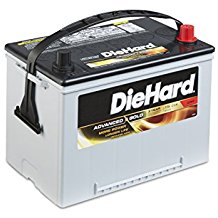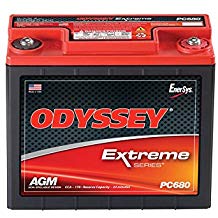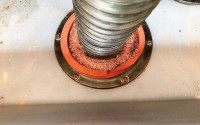RV Batteries Explained
Solving the RV battery mystery. In this article and video we’re going to take a simple approach to understanding RV batteries. By the end of this video you’ll understand battery voltages capacities series, parallel, series parallel configurations flooded lead-acid sealed lead-acid AGM,TPPL battery types and why AGM changed the game.So let us get started.
in this video when I refer to an RV it could be anything from car camping to a small tent trailer to a teardrop trailer to a van travel trailer all the way up to a giant diesel pusher. So let’s take a look. A battery is a simple energy storage device that stores electrical energy as chemical energy. In a flooded lead-acid battery there’s an anode and a cathode made of lead or alloy which are suspended in an electrolyte liquid acid electrons move back and forth between the anode and cathode through chemical reactions within these three basic building blocks.
Early in the history of battery, development battery designers were faced with a design challenge they found that lead was the best material electrically but its a soft metal that’s easily bent. The designers found that by making the plates thicker and combining the lead with other materials typically antimony for deep-cycle applications the designers were able to prevent plates from bending while being suspended in a liquid electrolyte. One of the negatives with a flooded lead-acid battery is the electrolyte is liquid and if the battery is tipped on its side, dangerous acid can be spilled. For this reason, while flooded lead-acid batteries are generally cheaper they must ship as hazardous material and will incur higher shipping costs. These batteries also give off hydrogen during charging which can cause explosions if not properly vented because hydrogen is a chemical component of electrolyte. Periodic refilling of the battery is required. As a solution to some of these limitations the sealed lead-acid AGM battery was invented. In the AGM battery the electrolyte is absorbed in a fiberglass mat between the lead plates. Spill risks are eliminated by sealing the battery The glass mat results in less gas production so venting is not required with the added bonus of not having to fill the battery with water ever. These require zero maintenance.

Another variant of the AGM battery is the Thin Plate Pure Lead or TPPL AGM battery type. By compressing the glass mats before assembly,as some some manufacturers do, the glass mats can lend support to the adjacent plates and eliminate the need to strengthen the lead with an alloy since it’s compressed fiberglass mats now support the pure lead. This allows more room for plates in the battery giving available power and faster charging capability to the user. By rethinking the original design challenge of soft lead suspended in liquid designers use the newer glass mat technology to solve the lead weakness problem in a different way and took advantage of increased power charge rate and longevity available by using pure lead plates.
Throughout this video blue boxes are used to represent a battery, the red boxes are used to represent a two volt cell within the battery regardless of the construction materials. The multi-plate two-volt cells are now combined in series within the case of the battery, in this case there would be a six volt battery combining three two volt cells. Again wiring any cell or battery in series causes the voltages to be additive so two plus two plus two volts equals six volts. I will be intentionally redundant when I’m talking about how series wiring affects voltage since it’s quite important in understanding these systems. The simplest RV battery configuration is a single 12-volt battery made of six 2-volt cells wired in series. They are quite useful and provide storage capacity suitable for many RV users.
Looking inside the battery you see the 12-volt battery’s construction again using 6 2-volt cells wired in series internally because of the number of golf carts in use and the deep-cycle requirements for an electric golf cart there are a lot of six volt batteries commonly available for purchase. Favored for the rugged construction and readily available supply many RV users have chosen to utilize golf cart batteries for their rigs. Frequently this involves addition of solar panels or a generator for off-grid camping electrical needs. Golf cart batteries tend to be available in the high storage capacities needed for these applications. Because RV systems are most commonly 12 volts the 6 volt golf cart batteries are typically connected in series which combines the voltages of the two batteries to equal 12 volts. This configuration, just like the single 12 volt battery has 6 2-volt cells. I am purposely pointing out the internal cell configuration because it will help to demystify a lot of information.
You will read a frequently asked question is which is better for RV use, 6 or 12 volt batteries. If we compare the single 12-volt battery with the 2 6-volt battery configuration a lot of this mystery can be simply explained. in either case the charge controller or output devices see the configuration as a single 12-volt battery. Pictures clearly show that each configuration at least electrically consists of 6 2 volt cells wired in series that combine to equal 12 volts. There’s simply not a lot of difference between the two. People will argue internal resistance of the 6 volt is lower but that’s an unfair comparison since we have to compare the two 6 volt batteries together versus the single 12-volt battery. Another common configuration is to wire two 12-volt batteries in parallel. Unlike series wiring combining two 12-volt batteries in parallel has no effect on the system voltage at all. The combined voltage remains 12 volts there is an advantage in storage capacity which is coming up soon in this video but for now we simply need to look and see that there is a string of 6 2 volt cells inside of each battery.
Please pay special attention to the parallel wiring note that the positive lead connecting the 12-volt system comes off of the top battery and the negative lead connected to the 12-volt system comes off of the bottom battery. It is important that the two leads are taken from different batteries to ensure that the batteries discharge equally. just as we combined the 2 6- volt batteries earlier into one 12-volt string, we can take the 2 6-volt batteries on the top row here, and combine them in series to make one 12-volt string and we combine the 2 bottom 6-volt batteries in series to create a second 12-volt string and also, just we combined the two 12-volt batteries earlier in parallel we can combine the two 12-volt strings above in parallel to make one 12-volt battery bank that is made up of 4 6 volt batteries. So why do we need to make a battery bank bigger rather than a single 12-volt battery? The answer to that is in storage capacity the amount of potential energy storage in a battery or battery bank is expressed in a unit called ampere hours or amp hours for short and abbreviated capital A lowercase h.
All six volt batteries are not equal sure, they may be 6 volt batteries but one that stores 100 amp hours will be less costly than the one that stores 200 amp hours. The user needs to select the size of the battery storage capacity based on their individual energy requirements. Unlike voltage, series wiring has no effect on storage capacity while parallel wiring combines battery storage capacity. Combining these two six volt batteries at 200 amp hours each results in no change of the storage capacity but a change in voltage. More on this later. Connecting two 12-volt batteries in parallel however allows us to add the capacity of the first battery to the second battery and the result is a 400 Amp hour battery bank that’s great news, because now we have more time to stay out in the boondocks or watch TV, play video games, surf the net or run medical devices.
Battery life is directly related to the percentage of the battery capacity that we use so it’s generally considered a wise choice to use only half the available capacity to make the batteries last longer. It is important to note that the faster we return the batteries to a full state of charge, the longer the batteries will last. So don’t be lazy and put off the battery charging. The combining of the batteries here results in a 12 volt 400 amp hour battery bank. Let us take this the next step. Here we have 4 6 volt batteries combining the storage capacity of the upper 12-volt string and the lower 12 volt string results in a 12-volt 400 amp hour system so now when we compare two 12 volt batteries on the left and four six volt batteries on the right, we can see that each system is made up of two strings of six two-volt cells. The system voltage is 12 volts and the storage capacity is 400 amp hours in each system your charge controller or battery charger sees each system as a single 12 volt battery bank electrically. for electrical purposes there’s very little difference between the two systems. There are some physical differences in plate thickness, charging rate, longevity and quality and any one of the system configurations can work for your application, provided it stores the amount of energy that you need. So, if everything looks the same what’s the difference? Well if you’re choosing to buy flooded lead-acid batteries, six volt batteries are considered to be more robust, longer-lasting because they were designed to service the golf cart industry.
There’s a wealth of knowledge available and there’s a long and successful history. These require vented storage, periodic maintenance, they don’t charge as fast as AGM batteries. Your cost difference when comparing these batteries will be in shipping and storage capacity. My recommendation is to compare a cost per amp hour as a metric to choose the best deal for you, assuming you’re choosing quality batteries. Please don’t buy budget batteries. If you are choosing to pay a bit more for the AGM batteries, you’re paying for storage capacity, ease of maintenance, the ability to store batteries inside your RV without extreme venting and important, most importantly in my opinion, the faster charge rate, because the faster charge rate allows your solar system to put energy into the batteries more quickly and to utilize your generator.

These are the right batteries for me. there are many good brands of AGM batteriesT-105 Trojans, the AGM version, Full River DC224 – 6 are six-volt batteries that are viable choices. Based on my research, I’m choosing to purchase two 12 volt Odyssey PC680 Battery“>Odyssey PC 1800 – FT batteries. The primary driver for my choice is that Odyssey battery claims to have the fastest charging AGM batteries. A claim that’s supported by field experience of RVrs and van dwellers that I’ve personally been in contact with. One user in particular has over 4 years on a set of 2, and it’s going strong. So full disclosure, I’m not being paid to promote any of these products mentioned. I’ve not received a discount for the products mentioned and the only discount that I may get for you, is by giving you this link to the RV Batteries on Amazon
page where you will find their latest special offers. So that’s it for now, I hope you enjoyed the video and I hope you learned something about your motorhome’s battery requirements and availability..



